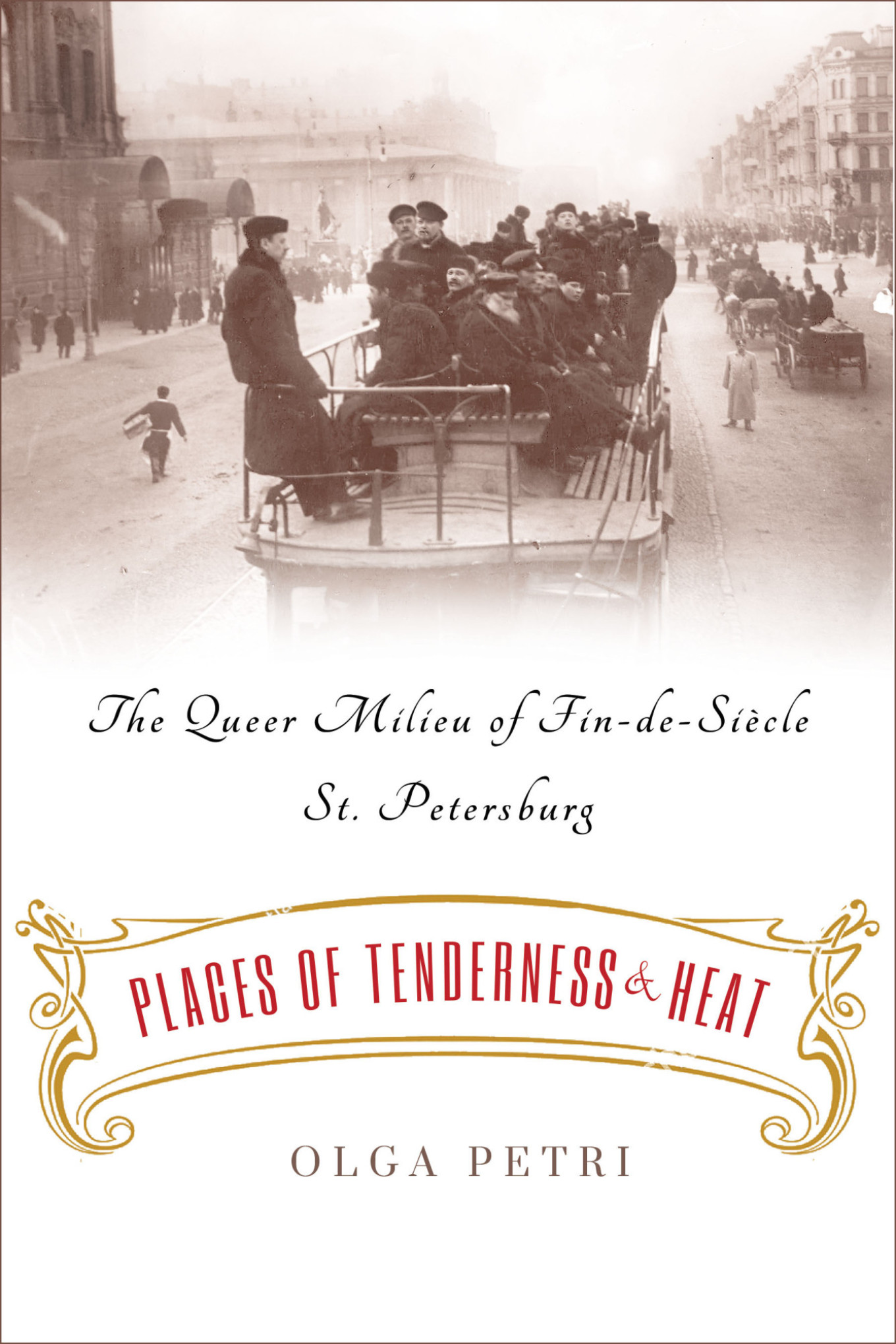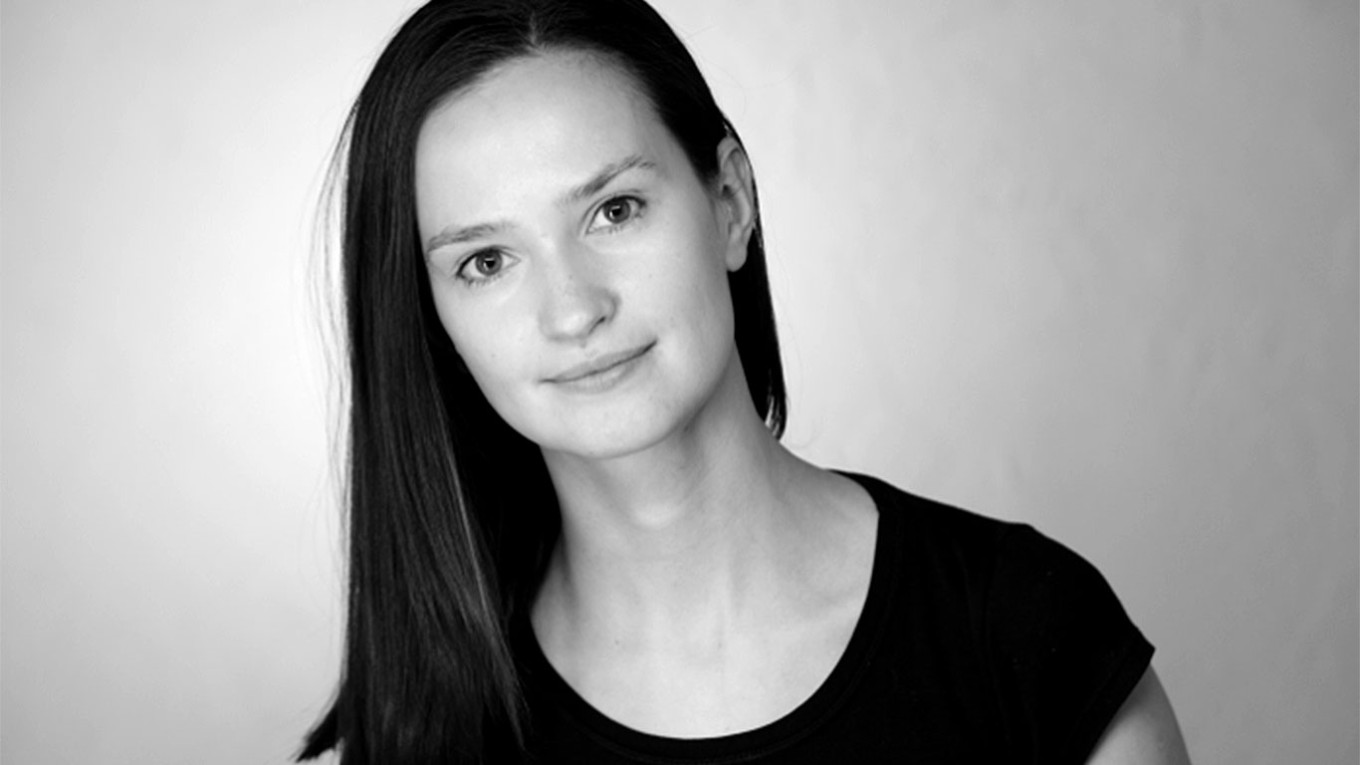A single snapshot of a madding crowd moving through a bustling capital city can only tell us so much.
Any conclusions we might draw from such an image can only be made on a surface level — from clothing, facial expressions and body language. All we can do is make vague inferences.
But if one were instead to leave their camera’s exposure on for hours or even days, clear patterns of social movement would begin to appear.
This is the lens through which urban historical geographer Olga Petri looks at “Places of Tenderness and Heat: The Queer Milieu of Fin-de-Siècle St. Petersburg.”
In her book, shortlisted for the 2023 Pushkin House Book Prize, Petri excavates the spatial patterns found in police records, personal accounts and more to map St. Petersburg’s constantly shapeshifting constellation of places frequented by queer men in the late 19th century.
More than an exploration of the dynamic relationship between the city’s geography and its queer milieu, Petri explores the social, economic and political factors that shaped it.
The author casts her net from an anonymously written police dossier aimed at exposing a nefarious “secret society” of “aunties” — aristocratic queer men — seeking to corrupt and sexually exploit “innocent” young men of the lower classes.
After disproving that dossier’s thesis, Petri looks at queer policing in St. Petersburg, from the police’s reluctant tolerance of the queer milieu’s visibility to their use of petty crimes statutes to suppress it.
She then gives an ambitious overview of St. Petersburg’s queer street life: how, in a city undergoing profound transformation, queer men structured their social and sexual worlds in response to their evolving sociopolitical environment, as well as how the city’s physical geography and infrastructure — its gardens, boulevards and bathhouses — shaped the patterns of flirting, cruising and socialization of this community.
For anyone interested in the Russian Empire’s nuanced, often tense relationship with queerness — or simply queer history in general — “Places of Tenderness and Heat” offers an illuminating long-exposure shot of a community long swept under the rug of Russian history.
Places of Tenderness and Heat: The Queer Milieu of Fin-de-Siècle St. Petersburg

From the Introduction
On June 12, 1910, twenty-one-year-old Johan Vol’mon came to the Kazanskaia Borough police station to report the disappearance of his friend and roommate, seventeen-year-old Dmitrii Gusev. The latter had not returned home after he and Johan had taken a stroll together two days earlier. On an initial reading, the report composed on the occasion of Dmitrii’s disappearance appears to be a haphazard collection of unconnected information. The shorthand notes of the constable questioning Johan inform us that the latter originated from Estlandiia, a province of the Russian Empire near the Baltic Sea, now Estonia. Dmitrii, in turn, was a peasant from Yaroslavskaia province, a region in the heart of European Russia near the upper Volga and far from the Baltic Sea. Here the report begins to deviate from the kind of detail necessary to a mere search for a missing person. The constable who composed it draws attention to the circumstance that the two young men not only came from entirely different regions but also worked in different factories and had learned very different trades. And yet, despite this, they lived together. These preliminary facts would have allowed contemporary readers to eliminate village connections or shared employment among the factors typically motivating young migrants to board together. These two men lived together because they had chosen to do so. They had found each other in the metropolis and formed a friendship strong enough for them to share a room.
The remainder of the report contains a nuanced investigation of Johan and Dmitrii’s relationship, eschewing altogether the topics required for a missing persons investigation. A physical description of Dmitrii, for example, is conspicuous by its absence. Instead, the report accumulates detail after detail to indicate that Johan and Dmitrii’s relationship was queer, but without ever quite making this suspicion explicit. Informed by an awareness of the city’s queer topography, it is a clear instance of “flagging”: this record would have been transparently legible to police colleagues. The report precisely describes the route along Konnogvardeiskii Boulevard where the two young men had walked when they were together for the last time. This tree-lined street with a pedestrian island in the middle, similar to the parallel Galernaia Street, would have been well-known to the interviewer and his peers as preeminent cruising sites frequented by queer men and male prostitutes. Along these streets, men who were interested in sex with other men strolled, tarried, or observed from the numerous cafés and restaurants, and agreed on rendezvous in more intimate venues. These streets were also located near the barracks of a major infantry regiment, whose members were variously reported to engage in homosexual sex, sometimes for money. The constable interviewing Johan did not, however, stop at spatial clues. He inquired into the details of the interaction that took place between Johan and Dmitrii when they were last on Konnogvardeiskii Boulevard. As he notes, not without a touch of pathos, Dmitrii had given Johan a porte-cigares (cigarette case) “as a farewell present.” To make the situation abundantly clear, Dmitrii had declared that he wished to move out of their joint lodgings the same evening and part ways for good.
Johan’s decision to disclose this information is no less significant than the constable’s decision to record it. In a single-minded pursuit of his intention to trigger a search for Dmitrii, Johan should have known better than to relay the interlude with the porte-cigares. The predictable price he paid for this indiscretion is that he failed to mobilize police resources for a major search effort. However, the comfort he took in telling his story to an attentive listener in this vast and dangerous city may well have compelled him to let down his guard for a moment.
The protocol is an exquisite example of bureaucratic communication. Indeed, the very possibilities that reward a close contextualized reading today would have been transparent to the constable’s colleagues. The issue at hand is presented not as a truly worrying disappearance, but rather as the end of the two young men’s intimate relationship—a breakup, not a suicide. In his masterful summary, the police constable and recordkeeper laid the basis for refraining from any immediate action and further work, while keeping himself above reproach by leaving the case formally open, “due to questionable statements of the applicant.”
Taken in the context of other cases explicitly linked to queer policing, the accumulated detail and the final decision in the protocol relegate the story of Johan and Dmitrii to the largely tolerated sphere of consensual queer relationships and offer a glimpse into the wider history of queer St. Petersburg, of queer lives as well as queer policing. Based on their choice of venue for a “farewell date,” their decision to live together, Dmitrii’s resolve to part ways, and Johan’s insistence on finding him, if the proposed reading has any merit, these two young men moved through the city as friends and lovers, not just as sexual partners. They might very well have belonged to the loose-knit community of “familiar strangers,” many of whom knew one another at least by sight, but shared crucial common ground even if they did not. Their perambulations and encounters, their contacts with the wider urban world, including the constable to whom we owe their fragmentary story, all contributed to the larger project of carving a queer milieu out of the bedrock of a reluctantly hospitable city. In this milieu, “queer” and “normal,” regulation and chaos, temptation and anxiety blurred in deceptive but partially decipherable ways, as this book undertakes to show. Ambiguous and cryptic as it may be, Johan and Dmitrii’s story opens a small window onto an otherwise opaque aspect of the city’s history, which can only be reconstructed by assembling a sufficient number of adjoining pieces of this intriguing mosaic.
If we turn from the micro to the macro, from the fate of two young men to the population of the city as a whole, we see that Johan and Dmitrii inhabited the very center of the world known to them. Late imperial St. Petersburg was the cultural, political, and social center of one of the largest empires in world history. In the period under review, the city grew impressively, adding about 1.5 million inhabitants between 1880 and 1914, reaching a population of around 2.2 million in 1914. During this period, the imperial capital transformed from a court and administrative center into an industrial-commercial metropolis of global significance. This transformation was easily visible on an international scale. From 1850 to 1900, St. Petersburg held its place as one of the most populous cities in Europe, trailing only three or four of the other great European capitals of the nineteenth century. The city’s demographic cauldron held elites eager to adopt the commercial, cultural, and technological achievements of the West in an unstable suspension with illiterate migrants, domestic and menial workers, and fortune-seekers of all brands, who, having recently abandoned rural lifestyles that were older than the empire itself, inevitably attracted the paternalistic attentions of authorities eager to curtail indiscriminate mixing and resultant threats to political and social order.
St. Petersburg was a city of contrasts—perhaps even more so than other cities its size. To some scholars, such as Marshall Berman, these contrasts seemed incapable of resolution. The city’s barely hidden cankers fatally undermined its pretense to modernity. In his famous discussion of St. Petersburg’s “modernism of underdevelopment,” Berman remarks that St. Petersburg’s shining modernity disguised the ugly consequences of its ramshackle rise: “Use of space behind the building façades was completely unregulated, so that, especially as the city grew, imposing exteriors could conceal festering slums.” To others, these contrasts were incongruous in appearance only, masking a complementarity of opposites, incendious but symbiotic, which is an established theme in the writing of Russian history. In this sense, St. Petersburg’s shocking mismatch between urbane pretense and primordial squalor merely reflect the intimate economic and demographic connections between misery and plenty in the empire’s particular mode of development. Peasant men and women drawn from its vast contiguous landmass, who were often racially indistinguishable from their masters, had built and sustained the palaces of its capital city. During the last two decades of imperial rule, their occupants continued to amass wealth by dipping into an increasingly mobile labor pool at world-beating rates, fueling a boom in Russian industrial production, but also reinforcing the concentration of income inequality in the empire’s largest cities.
Here, as elsewhere, the complementarity of contrasts shaped not only the physical but also the moral topography of the city, spatial and behavioral discontinuities that presented themselves as opportunities for transgression. An imaginary landscape to which Miles Ogborn refers in his discussion of pleasure, license, and commerce in London’s eighteenth-century Vauxhall Gardens is an illustrative example and speaks back to Berman. A satirical, moralizing piece in the Weekly Register from 1732 describes “Virtue” leading “Curiosity” to four pleasure palaces in the garden: love, wine, ambition, and money. Behind each of the facades lurk ungainly courts, undercrofts, garderobes, and kitchens, with all the sordid, but necessary, consequences of the temptations displayed with such appealing luster in the front-facing staterooms.
The title of this book, “A Place of Tenderness, a Place of Heat,” refers to a similar set of contrasts and complements, but their juxtaposition and context emphasize the locally specific connections between queer socialization and sex, rather than any inherent contradictions between them. The aim of this book is neither to pass judgment on the city’s abortive transformation into a modern metropolis nor to diagnose the germination of identities connected to illicit sex. Instead, the book stays close the ground to explore the relationship between the management of space and behaviors ranging from informal communion to outright sexual transgression. It emphasizes a dynamic negotiation over the use of urban space and the patterns of movement and encounter that instantiated the city’s queer milieu.
On the most literal, geographical level, this book’s title refers to a spatial pattern that played an important role in late imperial St. Petersburg’s queer milieu. This pattern straddled and connected one of the city’s parks and several nearby bathhouses. In the park, the Tavricheskii Garden, men interested in sex with men met, talked, and socialized. “Tenderness” refers to the latent possibility of sex, friendship, and even love that drew men to this garden. “Heat,” by contrast, refers to sexual passion, which could not conveniently be consummated then and there, but might be pursued in the semipublic spaces of the nearby Znamenskaia or Basseinaia Baths. The title reflects this book’s ambition to capture a range of activities far broader than the single-minded pursuit of sex, but nevertheless tethered to the possibility of it. Recognizable if often discrete patterns of movement and encounter played a crucial role in facilitating sex as well as nonsexual communion among men with broadly diverse but consistently illicit sexual desires directed at persons of their own physiological sex. In places of tenderness, such as the Tavricheskii Garden, the latency of sex, meaning the opportunity for men to meet other men with whom they might have sex, was an essential feature, but it often slipped into the background as looks, encounters, conversations, and perambulation dominated the playbook of activities. The possibility to transition from tenderness to heat, nevertheless, exerted an almost magnetic effect in arranging even seemingly casual queer spatial patterns near spaces, where “heat” could be contained and accommodated. The transition between tenderness and heat, usually involving a spatial journey, posed one of the fundamental challenges underlying the spatial negotiation addressed in this book.
The terms are not my own. The title is gleaned from the 1906 diary of Mikhail Kuzmin, a poet, composer, and writer of the so-called Russian Silver Age. He and his onetime lover, the painter Konstantin Somov, conceived of a map and poem as a fanciful reflection of their own spatial patterns (more on this in chapter 5). As an idiomatic reference or mnemonic encapsulating the overarching topics of this investigation, the title reflects the complementarity of observable socialization among queer men in the city’s public spaces with the more intimate interactions that took place in the city’s private or semipublic spaces, such as bathhouses. Importantly, it emphasizes subterfuge and calibration of behaviors to settings, insofar as part of the map’s purpose was to help its users navigate the city and avoid getting caught.
Excerpted from “Places of Tenderness and Heat. The Queer Milieu of Fin-de-Siècle St. Petersburg,” written by Olga Petri and published by Cornell University Press. Copyright © 2022 Cornell University. Used by permission. All rights reserved. Footnotes have been removed to ease reading. For more information about the author and this book, see the publisher’s site here.
"Places of Tenderness and Heat" has been shortlisted for this year’s Pushkin House Book Prize, which will be awarded on June 15 in London. Tickets for the ceremony are available here.
A Message from The Moscow Times:
Dear readers,
We are facing unprecedented challenges. Russia's Prosecutor General's Office has designated The Moscow Times as an "undesirable" organization, criminalizing our work and putting our staff at risk of prosecution. This follows our earlier unjust labeling as a "foreign agent."
These actions are direct attempts to silence independent journalism in Russia. The authorities claim our work "discredits the decisions of the Russian leadership." We see things differently: we strive to provide accurate, unbiased reporting on Russia.
We, the journalists of The Moscow Times, refuse to be silenced. But to continue our work, we need your help.
Your support, no matter how small, makes a world of difference. If you can, please support us monthly starting from just $2. It's quick to set up, and every contribution makes a significant impact.
By supporting The Moscow Times, you're defending open, independent journalism in the face of repression. Thank you for standing with us.
Remind me later.







